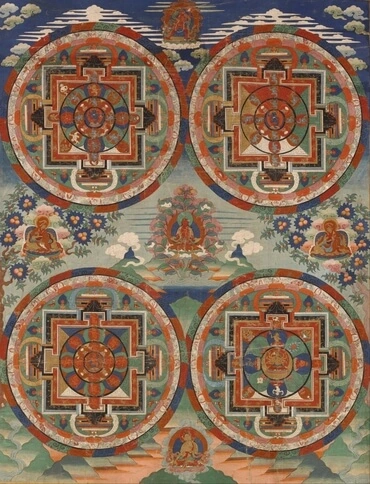1
이에 내가 보니 그룹들 머리 위 궁창에 남보석 같은 것이 나타나는데 보좌 형상 같더라
2
하나님이 가는 베옷 입은 사람에게 일러 가라사대 너는 그룹 밑바퀴 사이로 들어가서 그 속에서 숯불을 두 손에 가득히 움켜 가지고 성읍 위에 흩으라 하시매 그가 내 목전에 들어가더라
3
그 사람이 들어갈 때에 그룹들은 성전 우편에 섰고 구름은 안 뜰에 가득하며
4
여호와의 영광이 그룹에서 올라 성전 문지방에 임하니 구름이 성전에 가득하며 여호와의 영화로운 광채가 뜰에 가득하였고
5
그룹들의 날개 소리는 바깥 뜰까지 들리는데 전능하신 하나님의 말씀하시는 음성 같더라
6
하나님이 가는 베옷 입은 자에게 명하시기를 바퀴 사이 곧 그룹들 사이에서 불을 취하라 하셨으므로 그가 들어가 바퀴 옆에 서매
7
한 그룹이 그룹들 사이에서 손을 내밀어 그 그룹들 사이에 있는 불을 취하여 가는 베옷 입은 자의 손에 주매 그가 받아 가지고 나가는데
8
그룹들의 날개 밑에 사람의 손 같은 것이 나타났더라
9
내가 보니 그룹들 곁에 네 바퀴가 있는데 이 그룹 곁에도 한 바퀴가 있고 저 그룹 곁에도 한 바퀴가 있으며 그 바퀴 모양은 황옥 같으며
10
그 모양은 넷이 한결 같은데 마치 바퀴 안에 바퀴가 있는 것 같으며
11
그룹들이 행할 때에는 사방으로 향한대로 돌이키지 않고 행하되 돌이키지 않고 그 머리 향한 곳으로 행하며
12
그 온 몸과 등과 손과 날개와 바퀴 곧 네 그룹의 바퀴의 둘레에 다 눈이 가득하더라
13
내가 들으니 그 바퀴들을 도는 것이라 칭하며
14
그룹들은 각기 네 면이 있는데 첫 면은 그룹의 얼굴이요 둘째 면은 사람의 얼굴이요 세째는 사자의 얼굴이요 네째는 독수리의 얼굴이더라
15
그룹들이 올라가니 그들은 내가 그발강 가에서 보던 생물이라
16
그룹들이 행할 때에는 바퀴도 그 곁에서 행하고 그룹들이 날개를 들고 땅에서 올라가려 할 때에도 바퀴가 그 곁을 떠나지 아니하며
17
그들이 서면 이들도 서고 그들이 올라가면 이들도 함께 올라가니 이는 생물의 신이 바퀴 가운데 있음이더라
18
여호와의 영광이 성전 문지방을 떠나서 그룹들 위에 머무르니
19
그룹들이 날개를 들고 내 목전에 땅에서 올라가는데 그들이 나갈때에 바퀴도 그 곁에서 함께 하더라 그들이 여호와의 전으로 들어가는 동문에 머물고 이스라엘 하나님의 영광이 그 위에 덮였더라
20
그것은 내가 그발강 가에서 본바 이스라엘 하나님의 아래 있던 생물이라 그들이 그룹들인 줄을 내가 아니라
21
각기 네 얼굴과 네 날개가 있으며 날개 밑에는 사람의 손 형상이 있으니
22
그 얼굴의 형상은 내가 그발강 가에서 보던 얼굴이며 그 모양과 몸둥이도 그러하며 각기 곧게 앞으로 행하더라







